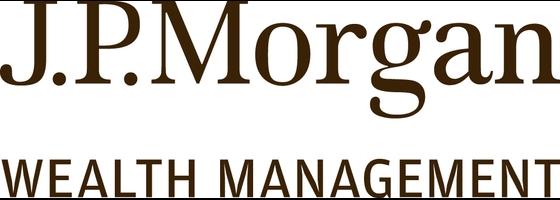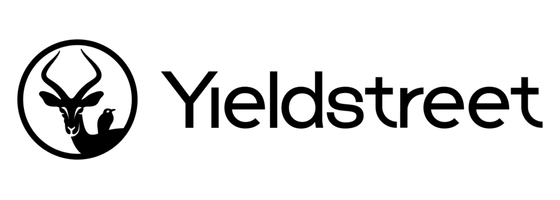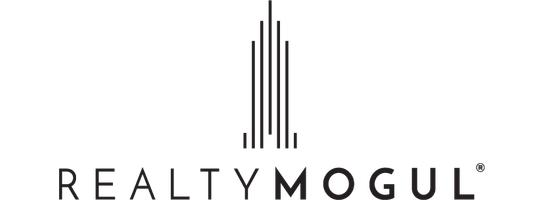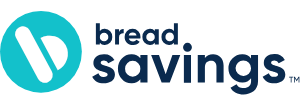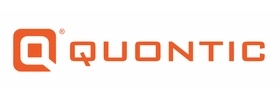9 Best Ways to Invest $100K

Our evaluations and opinions are not influenced by our advertising relationships, but we may earn a commission from our partners’ links. This content is created by TIME Stamped, under TIME’s direction and produced in accordance with TIME’s editorial guidelines and overseen by TIME’s editorial staff. Learn more about it.
If you have $100K to invest—from an inheritance, a bonus, or a lucky lottery ticket—it provides an excellent opportunity to start (or continue) securing your financial future. With this much cash, you’ll have numerous investing options, and the best one for you depends on your goals, risk tolerance, and time horizon. Here are nine of the best ways to invest $100K to help you and your family build wealth and financial stability over time.
With $100K in your pocket, you might be eager to start investing and making money. However, it's a good idea to prioritize two financial objectives first:
It’s also essential to consider your goals, time horizon, and risk tolerance before investing. Are you saving for a down payment on a house, college for the kids, or retirement? Will you need the money in one year, 10 years, or 30 years? Are you comfortable assuming more risk for higher potential rewards? Do you want to pick and manage your investments or prefer a hands-off approach? Answering these questions can help you determine the best ways to invest $100K to build wealth for you and your loved ones.
Your retirement nest egg should be the next focus once your high-interest debts are under control and you have an emergency fund. IRAs and 401(k)s (and other employer-sponsored savings plans) offer a tax-advantaged way to save for retirement. With $100K, you can increase or max out your annual contributions to both types of accounts. Start by contributing enough to your 401(k) plan to get the full match if your employer offers this benefit (the match is like getting free money), then max out your IRA.
The IRA contribution limit is $7,000 in 2024, up from $6,500 in 2023. If you're 50 or older, you can contribute an extra $1,000 per year. A 401(k) plan has higher contribution limits. For 2024, 401(k) employee contributions are capped at $23,000 with a $69,000 limit on combined employee and employer contributions. (Contributing this much generally means that the employee makes additional after-tax contributions to their 401(k) if their plan permits them.) This year’s limits are an increase from $22,500 and $66,000 in 2023. During both years, you can make a $7,500 catch-up contribution in addition to the employee and employer limit if you are 50 or older.
Here's a recap of the IRA and 401(k) contribution limits for 2023 and 2024:
| 2023 | 2024 | |
|---|---|---|
IRA contribution | $6,500 | $7,000 |
IRA contribution if 50 or older | $7,500 | $8,000 |
401(k) employee contribution | $22,500 | $23,000 |
401(k) employee contribution if 50 or older | $30,000 | $30,500 |
401(k) employee + employer contribution | $66,000 | $69,000 |
401(k) employee + employer contribution if 50 or older | $73,500 | $76,500 |
Buying shares in a mutual fund, exchange-traded fund (ETF), or index fund can be a great option if you want to avoid picking individual investments. All of these funds hold baskets of assets that provide a simple way to diversify your portfolio, but there are some differences worth noting.
Mutual funds are bought and sold once daily after the market closes through the mutual fund company or a broker. Actively managed mutual funds have professional fund managers who select the securities in the fund and make decisions on behalf of the fund's investors. That means the costs are generally higher than those for ETFs and index funds.
ETFs typically track an index (e.g., the S&P 500) and are offered on every asset class, from traditional investments to alternative assets such as currencies and commodities. They’re bought and sold on exchanges through brokerage firms. One example is J.P. Morgan Self-Directed Investing, which offers both full shares and fractional trading on eligible ETFs (and stocks). Fractional trading lets you buy into those ETFs and stocks starting with just $5, regardless of the share price. Like stocks, ETF prices fluctuate throughout the trading session, and you can use different order types (such as limit and stop-loss orders) to fine-tune your trade entries and exits.
Index funds are mutual funds that track the performance of a specific market index. Rather than picking individual investments, the fund buys all (or a representative sample of) the securities in the underlying index. Like mutual funds, index funds trade once daily after the market closes. Historically, index funds consistently outperform actively managed mutual funds in the short and long term, making them a good option for investors interested in a simple, low-cost investment.
INVESTMENT AND INSURANCE PRODUCTS ARE: NOT A DEPOSIT • NOT FDIC INSURED • NO BANK GUARANTEE • MAY LOSE VALUE
When you own dividend-paying stocks, you can receive the dividends in cash or reinvest them. Cash dividends provide income, while reinvestment lets you acquire more shares of the same company over time, potentially boosting future dividends and long-term returns. While buying stocks with the highest dividend yields might be tempting, above-average yields can signal a problem with the company. Instead, the best dividend-paying companies steadily increase their dividends over time. For example, the "dividend kings" are an exclusive group of stocks that have increased dividends for at least 50 consecutive years.
New customers earn 5.25% APY for a limited time. No minimum balance & cancel anytime. Terms apply.
*limited time offer and subscription fee applies
Bonds can play an important role in diversifying your investment portfolio, balancing out your stocks, and potentially lowering the risk that all your investments will fall simultaneously. As a bond investor, you'll receive regular payments (or "coupons"), which can help generate income.
Government bonds (aka "Treasurys") are generally considered the safest investments because they're backed by the full faith and credit of the U.S. government. Other types of bonds include corporate bonds and municipal bonds (earnings on the latter are exempt from federal taxes). Instead of buying individual bonds, many investors opt for bond ETFs or mutual funds, which can be an affordable and straightforward way to invest in a broad portfolio of bonds.
Alternative investments fall outside the usual stock, bond, and cash lineup. Examples include precious metals, cryptocurrencies, real estate, and collectibles such as fine art. Alternatives are often more complex and riskier than traditional investments, but they can provide diversification and higher potential earnings—if you're comfortable with the risk.
With $100K, you could invest in a rental property to generate a steady income stream and take advantage of numerous tax benefits. If you'd rather avoid being a landlord, consider a real estate investment trust (REIT)—a company that owns and operates income-generating properties such as office complexes and apartment buildings. Alternatively, you could invest in real estate crowdfunding, which lets you pool your money with other investors to buy properties as a group and share in the profits.
With a health savings account (HSA), you set aside pre-tax money to cover medical expenses like prescriptions and doctor visits, lowering your healthcare costs. Contributions are tax-deductible, and you can invest the funds to grow the account. Withdrawals are tax-free when used to pay for qualified medical expenses, and unused funds carry over from year to year. When you turn 65, you can spend your HSA on anything—but it will be taxed as income if it's not a qualified medical expense.
HSAs always pair with a high-deductible HSA - eligible health insurance plan (check your policy to ensure you can open and fund an HSA). For 2024, the contribution limit is $4,150 for self-only coverage and $8,300 for family coverage, an increase from $3,850 and $7,750 in 2023. If you're 55 or older, you can contribute an extra $1,000 each year as a catch-up contribution. Be sure that a high-deductible plan makes sense for you or your family before choosing this route.
If you're still deciding how to invest your money, be sure it's stashed somewhere safe, like a certificate of deposit (CD). Deposits held at FDIC-member banks and NCUA-member credit unions are insured up to $250,000 per depositor, per financial institution. These accounts are also paying some of the highest interest rates in years. The best CDs offer more than 5.30% APY and lock in a competitive rate for a while—typically anywhere from three to 60 months, so your yield is guaranteed.
The best money market accounts offer slightly lower APYs, but they tend to offer more flexibility than other deposit accounts. For example, the Quontic Money Market Account offers a competitive 4.75% APY on balances of $0 or more, and you can access your account via ATM, debit card, check, or money transfer.
Choosing the best way to invest can be overwhelming, especially if you don’t have the time or interest to research your options—or the confidence to make choices. If this sounds like you, consider investing a small part of your $100K in a financial advisor who can create a plan for your finances. Financial advisors have the credentials and expertise to advise you on retirement planning, tax planning, investment advice, and more. So, whether you’re investing for retirement or to reach a specific goal, a financial advisor can help point you in the right direction—and keep you on track.
There’s a lot to consider when choosing a financial advisor. For example, you’ll want to check a potential advisor’s credentials, understand how they’re compensated, and determine whether they’re a fiduciary who will act in your best interest.
Most financial advisors charge a percentage of your assets under management—typically 0.25% to 1%—while others charge a flat hourly or annual fee. Advisors also often charge a commission for the products you buy, such as annuities or life insurance policies. Online services like WiserAdvisor can match you with a financial advisor to help you get the most out of your $100K.
Find the right financial advisor with WiserAdvisor
Find the right financial advisor with WiserAdvisor
A $100K windfall can help you secure your financial future, but not everyone is comfortable deciding what to do with that much money. If you don't have the time, interest, experience, or confidence to build a diversified investment portfolio, a robo-advisor or financial advisor can help.
Robo-advisors like M1 Finance use computer algorithms to build a diversified portfolio based on your goals and risk profile. As robos grow in popularity, more investment giants like Charles Schwab, Fidelity Investments, and Vanguard are rolling out their own robo-advisor platforms. Some platforms also let you consult with a financial planner or advisor for regular check-ins or help with specific questions. Robos generally charge a monthly fee or an annual management fee based on your account balance, typically 0.25% to 0.50%.
For more guidance, consider hiring a financial advisor who will evaluate your current financial situation, help you prioritize your financial goals, and develop a personalized plan to get you there. Depending on the type of financial advisor you have, they might also help in areas like college planning, retirement planning, budgeting, insurance, debt management, tax planning, estate planning, and more. Importantly, a financial advisor can also recommend the best places to hold your investments, such as a taxable brokerage account or tax-advantaged retirement account.
The information presented here is created by TIME Stamped and overseen by TIME editorial staff. To learn more, see our About Us page.

